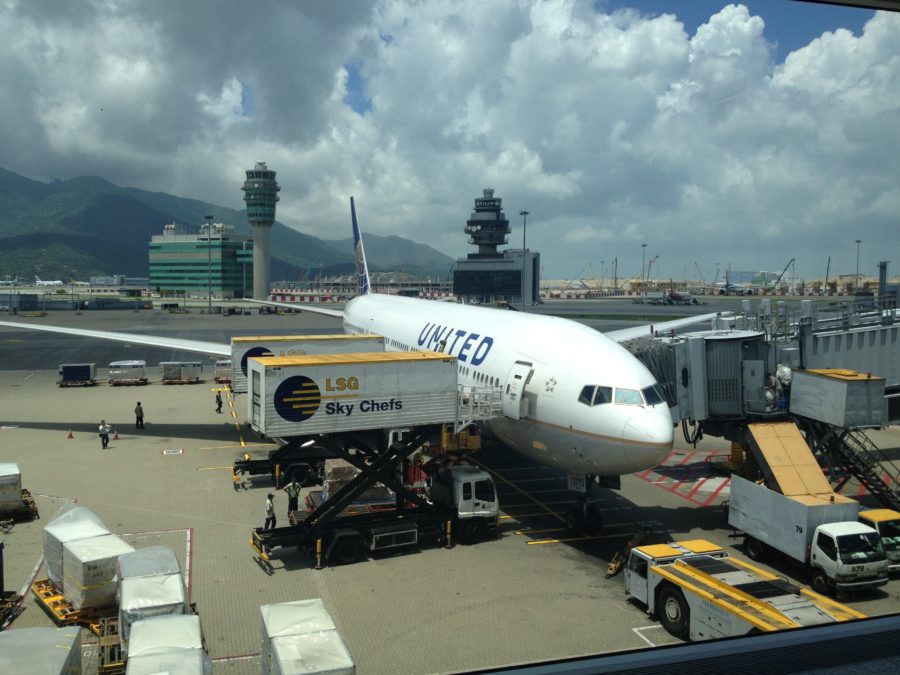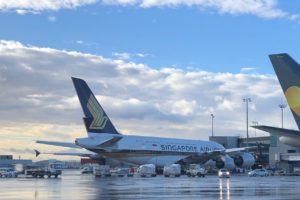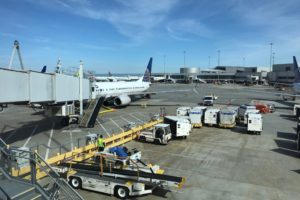The Future Fleet Plans of United Airlines
- The Future Fleet Plans of United Airlines
- The Future Fleet Plans of Delta Airlines
- The Future Fleet Plans of American Airlines
In this article (and two more, on both American and Delta), I will examine the future fleet planes that United Airlines has on order. What I will do is explain which aircraft United will replace in the future, which ones they have on order, what the interiors of the aircraft on order are and the ones that they will replace have. United overall has a pretty ageing fleet, with many old 757s and 767s which, while they may have relatively acceptable interiors, will eventually need to be replaced due to their pure old age. United does have many aircraft on order (precisely 259 of them), including Boeing 737 MAXs, Boeing 787s, A319s, and Airbus A350s.
Regional Fleet Plans:
United’s regional brand is United Express. For all of you who may not know, all three major US Airlines have regional brands which have planes operated by smaller companies, such as ExpressJet. United Express has planes which are operated by Air Wisconsin, Commutair, ExpressJet, GoJet, Mesa Airlines, Republic Airline, SkyWest Airlines, and Trans States Airlines. On its United Express fleet, United operates Embraer E145s, CRJ 200s, CRJ700s, Embraer E170s, and Embraer E175s.
You can basically classify the United Express fleet into two categories: the 50 seat jets and the 70-80 seat jets. Both the Embraer E145 (which is in a 1-2 configuration) and the CRJ-200 have 50 seats, and are in an all-economy configuration and feature no in-flight entertainment; they are mostly flown on flights less than two hours. The Bombardier CRJ-700 and the Embraer E170 both feature 70 seats, and the Embraer E175 features 76 seats. All (except for a handful of CRJ-700s) of these aircraft have a small first class section and have personal device entertainment; they are mostly flown on flights up to 3.5 hours.

A United Embraer E175 in Chicago
So what can we expect in terms of United’s future regional fleet? Just more of the same. United has taken delivery of most of their Embraer E175s, which is its most modern regional aircraft but will have more of them delivered in the future. Also, United Express (partners) also have on order multiple more (used) Embraer E145s and CRJ-200s, which will be able to expand on smaller yield routes. Nothing much should change on United’s tiny regional jets within the next 5-10 years. However, I do expect that United might eventually order Embraer E2 Jets through one of their aircraft operators (Skywest, Mesa Airlines, etc….) to replace their older CRJs and ERJs.
Narrowbody Fleet Plans:
For those of you who don’t know, narrowbody aircraft are aeroplanes that only have one aisle, such as the 737 or A320. United’s narrowbody fleet consists of the Airbus A319, A320, 737-700, 737-800, 737-900, 737 MAX 9, 757-200s, and 757-300s. Their older 737s and 757-300s feature personal screens with DirecTV satellite TV available for purchase along with a small number of movies, and their newer or retrofitted narrowbody aircraft (A319/A320/737/757-200) feature free stream to your device entertainment (personal device entertainment). Also, their 757-200s, which are flown on longer transcontinental or transatlantic routes feature personal on-demand entertainment.
In terms of aircraft on order, United has multiple used Airbus A319s on order to expand their short-haul network. Also, they have over 150 737 MAXs on order. The 737 MAX 9s and some 737 MAX 10s will be used to both expand their US network and replace their older 737s. Some of their 737 MAX 10s will be configured with lie-flat seats and will be used to replace their transcontinental 757s and will be used to expand their transcontinental network with lie-flat seats. United intends to expand their premium transcontinental on more routes other than their current routes from Newark and Boston to San Francisco and from Newark to Los Angeles on flights such as from Washington to San Francisco or from Newark to Seattle or San Diego.

A United Boeing 737-700 at Washington Dulles Airport
While United has aircraft on order that will replace its older 757s which fly on domestic routes, it still will need to replace their 757s which fly on transatlantic routes. There are around 30 of them which currently fly on long(ish) routes (mostly transatlantic) and have flatbed seats in business class. United has two options. One would be to only take delivery of their 737 MAXs which can fly on shorter transatlantic routes. For context, the new 737 MAXs can fly 3,500 nautical miles, while some of their low yield long-haul routes (such as from Newark to Porto or Washington to Edinburgh) are longer than that, so the 737 MAX won’t be sufficient to replace their transatlantic 757s which have a range of 3,800 nautical miles.
United has been rumoured to be in talks to buying the Airbus A321lr, which has a range of 4,000 nautical miles. The A321lr has capacity slightly larger than the 757 and has a range even greater than it, and it is currently in production, so it logically would be a perfect replacement for it. It would probably offer lie-flat seats in business class, and would probably have personal on-demand entertainment.
Widebody Fleet Plans:
United’s widebody fleet consists of the Boeing 767-300, 767-400, 777-200, 777-300, 787-8, 787-9, and (the first aircraft being delivered only a few days ago) the 787-10. All aircraft (except for domestically configured 777-200s) feature personal entertainment screens in economy class. While all widebody aircraft feature flatbed seats in business class, only 777-30s, 787-10s, and reconfigured 767-300s and 777-200s feature the new United Polaris seat with all aisle access. For those of you who don’t know, United retired their last 747-400 at the end of last year and replaced them with the 777-300.

The New United Polaris Seat (Photo Courtesy of United Airlines)
United’s 767-300s and 777-200s are really ageing; most of their 767s come from the early 1990s while most of their 777-200s come from the late 1990s. In a recent article, I speculated that United would use the upcoming Boeing NMA (unofficially dubbed the 797) to replace their 767s, as it has no aircraft on order that are roughly the same size as it. This means that United will do whatever it can do to extend the life of the 767s like retrofitting it with new seats (which it currently is doing) to try and bridge the gap until a replacement jet for the around 215 seat jet is built. Another option for United may be to replace their 767s with the new A330-800neo which is roughly the same size. While United does have many widebody aircraft on order, I don’t think that it will be enough to cover its current aging fleet.
Currently, United has 45 Airbus A350-900s on order, 13 787-9s on order, and 13 787-10s on order. United’s 787s are currently in the process of being delivered over the next few years. However, the A350-900s on order won’t start to be delivered until 2022. The 787s are intended to increase the airline’s network, while the A350s will be used to replace the 777-200s that the airline has. Over the next few years, United will start to retire its 777-200 jets which are not the -ER (extended range) version of the jet, although we can expect for United to keep their 777-200ERs in their fleet for around ten more years.

A United 777-200
United recently introduced their first premium economy seat (labeled Premium Plus) which is currently available on retrofitted 777-200s and 787-10s. While now the seats are sold in the economy plus section, United will introduce an enhanced service for the cabin next year. In terms of retrofitting aircraft with the new Polaris seats with all aisle access, United has the seats installed on 777-300ERs, 787-10s, and is in the process of retrofitting them onto most 777-200s and 767-300s. United will take delivery of their A350-900s with the new seats. Unless United introduces an even newer business class seat in three to five years (which I highly doubt), United will eventually retrofit their 787-8s and 787-9s with the new seat. United currently has no plans to retrofit their 16 767-400s with the seat, although that could change in the future.
Conclusion:
United Airlines operates over 1,300 aircraft (including United Express) and due to its aging aircraft certainly needs a fleet refresh. Its 757s, 767s, and 777s are showing their age, although many of them will remain in their fleet for the next decade due to aircraft refurbishments. Many of United’s older intercontinental aircraft feature dated business class seats which will slowly be replaced with new Polaris seats which have all aisle access. Within the next years, United will introduce more 737 MAXs, some of which have flat bed seats in business class and the Airbus A350 which will be used to replace many of their 777s.
What do you think of United Airlines’ future fleet plans?




